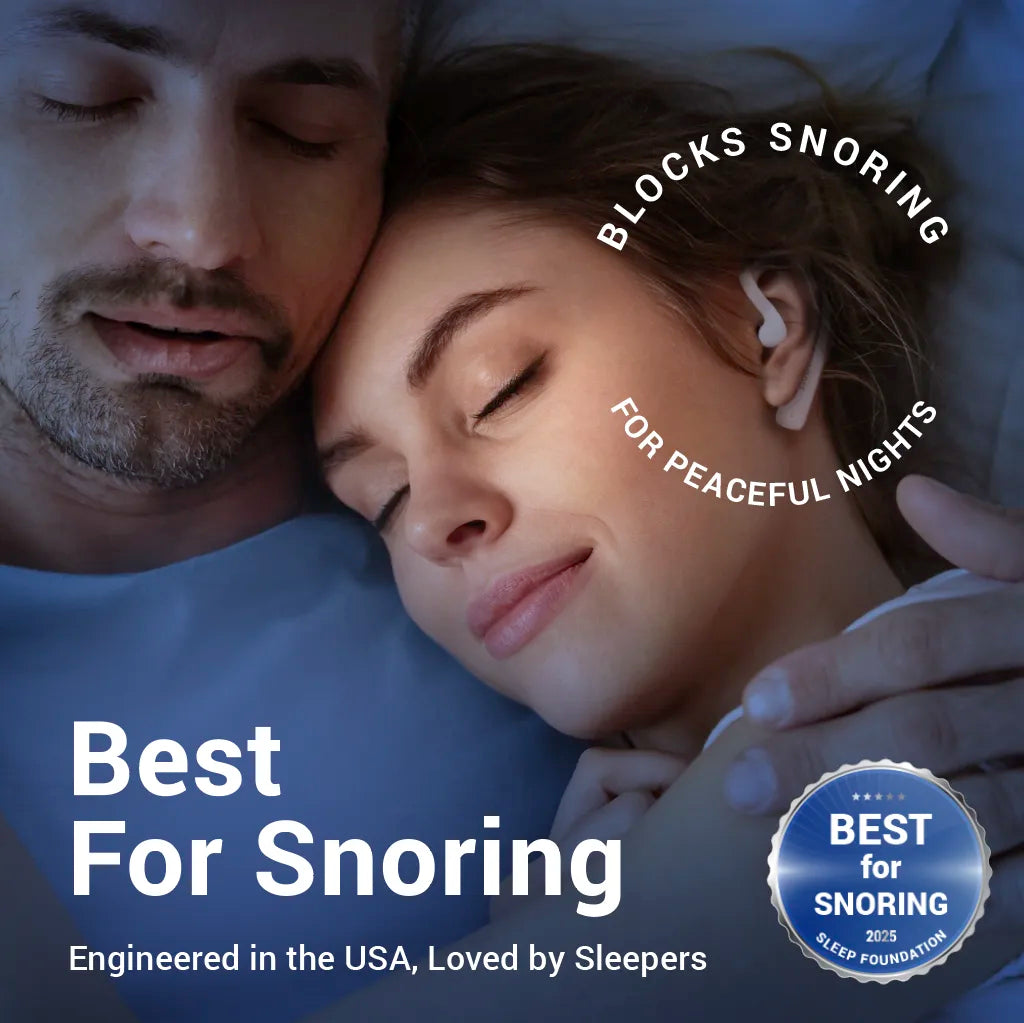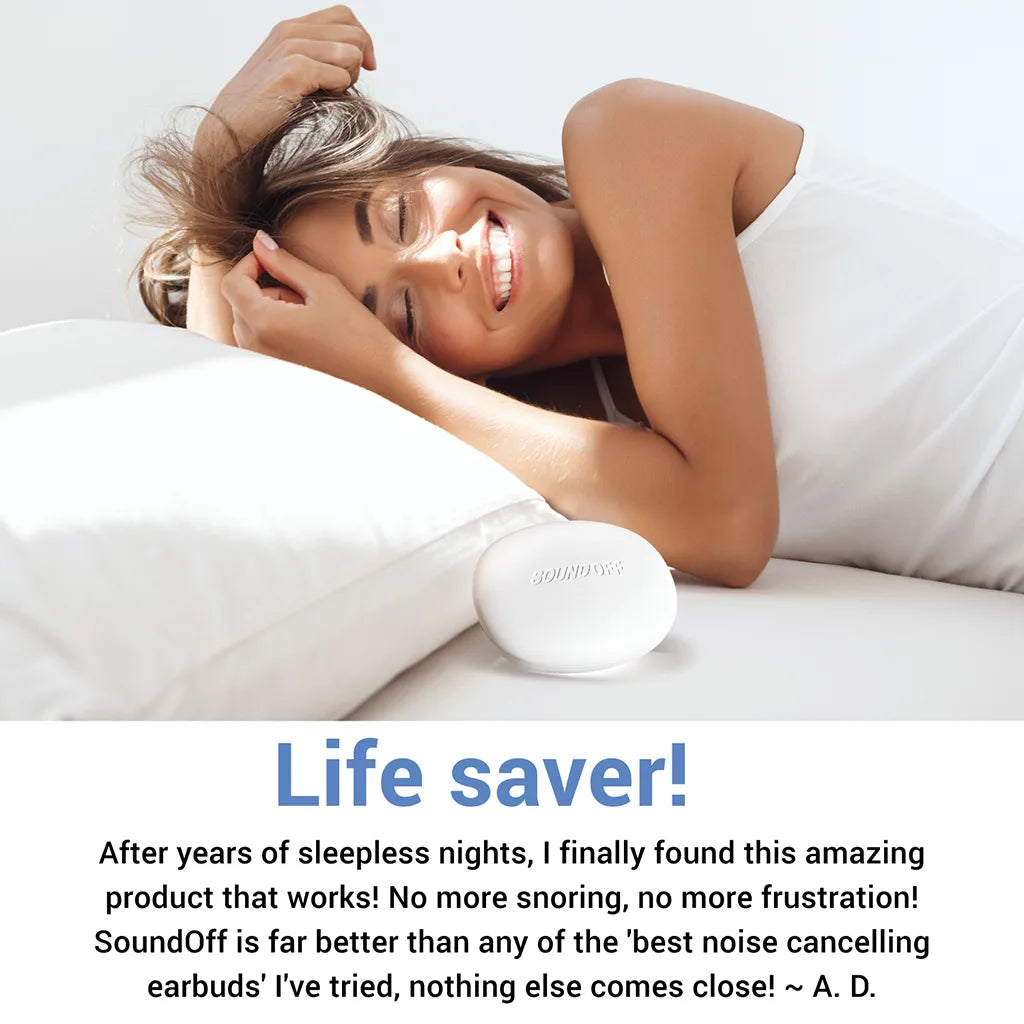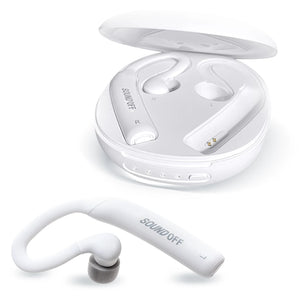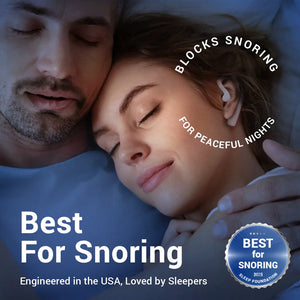
7 Lesser-known Insomnias: Signs, Symptoms & Tips
We last looked at the main forms of Insomnia experienced by the millions of sufferers nationwide. In this post we’ll examine 7 lesser-known Insomnias—as well as signs, symptoms and tips for dealing with these sleep-destroying disorders. As previously noted, most Insomnia is readily treatable…
However, we also noted, Americans as a whole aren’t quick to seek treatment which can lead to an array of health maladies we would all wish to avoid. So, as a gentle reminder, don’t risk the consequences of an undiagnosed sleep disorder when help is so readily available. Now, let’s jump right in to these 7 lesser-known Insomnias…
1—Conditioned, or Psychophysiological insomnia
This lesser-knownChronic Insomnia subtype results in difficulty falling asleep in one’s familiar sleep setting at the desired time. It normallydevelops out of periods of stress in which anxious thoughts keep the person awake. Here’s what happens:
- After several nights of disrupted sleep, the person becomes increasingly concerned over their inability to sleep.
- A cycle ensues during which their worry over not being able to sleep continues to keep them awake.
- The Insomnia develops further into negative associations with pre-bed activities—brushing their teeth, and other pre-bed preparations are perceived as causes for their inability to sleep, creating a conditioned negative response.
Frequent worry about the inability to sleep—which then overshadows other medical or social problems—is a distinguishing feature of this disorder.
Common Symptoms of Conditioned Insomnia
- depression and irritability
- fatigue
- decreased motivation
- memory impairment
- poor concentration
Neurasthenic symptoms may also be present with Conditioned Insomnia, such as tension headaches or cold hands and feet. Sleep may occur at odd times (when one is exerting no effort to sleep) for instance, while reading or watching television. Noted characteristics from sleep studies also show:
- Increased sleep latency (exceeding 30 minutes—the average person takes 1-20 minutes to fall asleep.)
- Increased wakefulness after finally falling asleep.
Sleep efficiency of less than 85 percent (the ratio of total sleep time to time in bed.)
How to treat Conditioned Insomnia
Psychophysiological Insomnia is best treated by a professional. One can begin by addressing their Sleep Hygiene which is a basic recommendation for people experiencing most forms of Insomnia. Professional treatment mainly focuses on Cognitive Behavioral Therapy (CBT.) This treatment consists of Relaxation Therapy including breathing techniques, meditation, and muscle relaxation. Some practitioners may choose to include sleep medications.
Sleep Tip for Conditioned Insomnia
Pre-Bed Relaxation rituals are a good practice for people suffering from an anxiety-based sleep disorder. As we’ve talked about in many past posts, consistency is always important, so create a ritual you’re most likely to follow. Then, pick a time that will work for you each night and keep the ritual consistent.
There are many possibilities to explore including meditation which is a #1 choice—just remember—it’s all about you and getting you to relax, not the ritual itself.
2—Drug or Substance-Induced Insomnia
This significant, lesser-known Insomnia is a direct result of ingesting drugs oralcohol. Many faced with sleepless nights turn to alcohol as a sedative. This is a mistake as it’s known to wake you up frequently in the middle of the night, disrupting the second half of your sleep. And, because alcohol relaxes throat muscles, it also disrupts breathing during sleep which is especially concerning to those suffering with Sleep Apnea.
Other troubled sleepers may self-medicate with medication or illegal drugs. The trouble here is that substance misuse—or the ensuing drug withdrawal, can actually create sleep problems or worsen existing disorders. In the event there is a history with addiction or substance abuse, it may raise chances for a relapse.
Prescription drugs
Drugs used in larger amounts or in ways other than prescribed by a physician can quickly lead to dependence, but knowing how to recognize a substance-induced sleep disorder can protect you from a developing an addiction…
How to recognize a substance-induced sleep disorder? Drug-induced sleep dysfunction manifests in four ways:
- One may have trouble falling and/or staying asleep.
- Daytime fatigue and depressed alertness may be present throughout the day.
- Sleepwalking, nightmares or night terrors may occur.
- One may experience a combination of any of these three above.
All those restless nights followed by days of endless fatigue pile on the anxiety—perpetuating a cycle of sleepless miser. The sooner one acts to bring it under control, the better...
Treatment for substance-induced Insomnia
To begin, you’re going to need a detox to rid your body of the substances you’ve been misusing. You should:
- Consult a professional for diagnosis and let them guide you through this process.
- Practice consistent sleep hygiene to move more quickly toward better sleep.
- Work with your chronotype to reset your natural biorhythms and reprogram your sleep cycle.
In most cases, the detox will vastly improve your sleep. However, you may need to address other issues at the same time; anxiety perhaps—or another health issue. Your best bet for fully restored sleep is to seek diagnosis and treatment through a doctor or substance-abuse treatment facility.
Sleep Tip for Substance-Induced Insomnia:
Mindfulness Meditationis a practice one uses to move into a state of restful, in-the-moment, alertness. This reduces stress and improves self-control. It works to slow racing thoughts and remove negativity—it effectively calms both mind and body.
If this sounds complicated, it isn’t. Do it anytime, anywhere—all you need is a comfortable place to sit for 3-5 minutes—and the right mindset. Here’s a quick start for practicing mindfulness meditation.
3—Idiopathic insomnia
Also referred to as Childhood-Onset Insomnia, Idiopathic Insomnia is a lesser-known Insomnia described in The International Classification of Sleep Disorders as “a lifelong sleep difficulty with insidious onset occurring during infancy or early childhood.”
Experts have found no apparent linkage to any medical or physical condition, other sleep disorder, psychiatric disorder, neurologic condition—nor medication or substance usage—that would explain its cause. However, newer research seems to lean toward hyperarousal of the central nervous system.
Meaning basically, the body’s response to stress induces a hypervigilant response at bedtime which makes it difficult to sleep due to changes in heart rate and body temperature.
Symptoms include:
- Difficulty falling asleep
- Inability to stay asleep
- Waking up too early
- Non-restorative sleep
- Daytime evidence of poor sleep
- The Insomnia is present for a month or longer
- Onset occurs during infancy or childhood.
- No identifiable precipitant or cause
- Persistent course with no periods of sustained remission
- Not better explained by another condition or sleep disorder
Treatment for Idiopathic Insomnia
Due to its insidious nature, the usual Insomnia treatments like Cognitive Behavioral Therapy fall short. Since the clinical profile of Idiopathic Insomnia, most closely resembles another disorder known as DSPS (Delayed Sleep Phase Disorder,) some believe treatment should be focused instead on addressing the circadian system dysregulation.
Because of its circadian nature, a chrono biotic approach, alone and/or in combination with standard methods, may be indicated for future management of idiopathic insomnia. The hormone Melatonin, known to effect biological timing, has had some success in treating children aged 6-12—however medications are typically prescribed for adults—and/or tension-release relaxation training.
Sleep Tip for Idiopathic Insomniacs
As we know from exploring Chronotypes, we can make great changes to our sleep and quality of life by working in cooperation with our chronobiology. If you haven’t yet discovered your individual chronotype, you can take a quick quiz developed by the Sleep Doctor, Michael Breus PhD. Results are immediate and can help you improve not only your quality of sleep—but your overall health as well.

Do you regularly wake up too early—and find yourself unable to fall back asleep? You may be experiencing #4 in our Lesser Insomnias...
4-Late Insomnia
Have you ever awakened early and been unable to fall back asleep? This is what happens with Late Insomnia—which is generally present in older adults. Late Insomniausually occurs between 3:00 and 5:00 am, when your body finds it too early to get up— but also too late to go back to sleep.
To be diagnosed with this condition, requires awakening at least 30 minutes early—at least three days per week.
What’s going on? Here are some possibilities…
Late Insomnia is a common symptom of Clinical Depression. If you’re not affected by depression, it may also be due to:
- Age-related circadian rhythm changes.
- Daytime lifestyle behaviors that inhibit good sleep.
Treatment for Late Insomnia
Cognitive Behavioral Therapy may be combined with Circadian Interventions like timed light exposure. These methods are most likely to be effective but sometimes require modification to accommodate medical, lifestyle and social factors as well as patient preferences. Results with these methods are generally good and long-standing.
Depression is often associated with sleep disorders and has a bi-directional influence—Insomnia leads to depression—and depression causes poor sleep. Lifestyle choices and anxiety management combined with doctor-prescribed medications are generally recommended as treatment.
Tips for warding off late Insomnia:
- Get regular exercise earlier in the day—not in the last hours before bed.
- Have a wind-down routine—practice it nightly, at the same time each night.
- Avoid alcohol, caffeine and nicotine before bed—check recommendations for your chronotype.
- Turn off all screens before bed to avoid blue light—remove devices from your bedroom at night.
- Empty your mind of worrisome thoughts—try journaling or meditating.
- Turn out lights and lower the temperature—so you’re not awakened due to discomfort.
Soft music and calming sounds can relax you and prepare you to fall asleep. The soothing sound of Pink Noise is often recommended by psychologists and neuro-field specialists and has been shown to be clinically effective at calming the brain and inducing stable sleep. You’ll find pleasant, calming pink noise in SoundOff earbuds—thousands of happy sleepers use them to fall asleep faster, sleep deeper, longer—and wake up fully rested. Give them a try.
Pink Noise is clinically proven to calm the brain and promote stable sleep. To imagine its gentle sound, try saying shhh…

5—Middle insomnia
With Middle insomnia, one finds it difficult to sustain sleep throughout the night. Sufferers have trouble staying asleep and will wake up at least once during the night and have trouble getting back to sleep. Middle insomnia is frequently associated with alcohol use, but may also be caused by medical conditions or environmental disruptions including…
- Chronic Pain
- GERD or other digestive issues
- Hot flashes from menopause
- Middle of the night baby feedings
- Prostate conditions that cause frequent urination
- Sleep Apnea
Or it may happen as a result of a sudden pulse of light—like someone switching on the television or a bathroom light.
Treatment for Middle Insomnia
Unless you do all the wrong things and turn it into Chronic Insomnia, Middle Insomnia is best dealt with by preventive measures that will keep your condition from worsening while it tries to resolve itself.
A list of “don’t do’s” if you will…
Number 1 on the list? Don’t try to correct your sleep—this means don’t sleep in, don’t take naps, don’t change your bedtime—don’t do anything other than letting your sleep correct itself. Otherwise, your Insomnia may become chronic and require medication or Cognitive Behavioral Therapy.
While you’re “not doing anything,” make sure not to do these things as well:
- Don’t start playing with your electronic gadgets
- Don’t get up and snack in the middle of the night
- Don’t obsess about not sleeping or what time it is
- Don’t let your pets sleep in your bed
You should also not turn on the television—oh alright, do it if you must—but put on a pair of sunglasses. Meanwhile, make an effort to always follow good sleep hygiene and healthy lifestyle practices.
Sleep Tip for Middle Insomnia:
Turn the face of your alarm clock away from the bed.If you can resist the urge to look at the clock, you’ll have a better chance of going back to sleep. Remember, you can’t fall asleep when you you’re anxious about being awake—or when you’re calculating how much sleep you’re losing.

Loved ones report patients experiencing Paradoxical Insomnia appear to be sleeping normally—though the patient is convinced they are not.
6-Paradoxical Insomnia
Also known as Pseudo-Insomnia, this is an unusual form of Insomnia in which one is actively sleeping, but feels as if they are not. Those suffering from this form of Insomnia overestimate how long it takes to fall asleep and/or the amount of time they spend awake. Likewise, they tend to underestimate the time they spend in sleep.With Paradoxical Insomnia, patients complain of little or no sleep over long periods of time. However, they do not show levels of impairment associated with such a severe level of sleep deprivation.
These are signs of Pseudo Insomnia
- Sufferers report heightened awareness of their sleep surroundings when lying down to sleep.
- They describe a subjective experience with Insomnia—without the usual resulting tiredness during the day.
- Loved ones report the individual appears to be sleeping normally.
- Sleep studies reveal normal sleep architecture, sleep onset latency, and sleep efficiency.
Sleep experts don’t understand what causes this disorder, but some research suggests a possible link with mental health issues such as anxiety and depression.
Treatment for Paradoxical Insomnia
Paradoxical Insomnia treatment normally revolves around reassuring the patient. It may include Cognitive Behavioral Therapy and Melatonin supplementation. Truth is, this condition is technically neither an Insomnia nor a sleep disorder. Instead, it is a misperception of sleeping and time spent sleeping. Consequently, over the counter and prescription medications used to treat insomnias and other sleep disorders are ineffective.
Sleep Tip for Paradoxical Insomnia
Therapy can help reduce the distress and confusion caused by Pseudo Insomnia—however this is only going to happen if the person suffering with the condition actually knows they have it—many don’t. Anyone attempting to deal with a chronic sleep disorder that doesn’t improve through self-care or home treatment should consult a healthcare professionalfor help in addressing the problem.
What’s wrong with this picture?
Laptops and other tech gadgets don’t belong in your bed—turn them all off at least an hour before bedtime.

7—Sleep Hygiene Insomnia
Here, we’re referring to Insomnia caused by not following good basic Sleep Hygiene. This means one is engaging in unproductive sleep habits such as:
- Inconsistent sleep/wake times
- Poor food choices or eating times
- Ignoring one’s Chronobiology
- Mis-use of caffeine, alcohol or substances
- Using tech gadgets at bedtime
- Not having a sleep-friendly sleep space
- Failing to establish a wind-down routine
Who knew this practice that finds its way into blog after blog, would finally emerge as the basis of its own sleep disorder?
Treatment for Sleep Hygiene Insomnia
We’ve learned along the way that what we do during the day—and especially what we do before bedtime—can either benefit our sleep or impair it. From the way we schedule our days—to what we eat and drink—the medications we take… how and when we exercise—and whether or not we’re able to turn our minds off at the end of the day… we are building our sleep story.
Tip for Sleep Hygiene Insomniacs
Make sleep a priority—With this disorder,YOU are the treatment—and even small adjustments can bring big improvements. Be mindful of your sleep from the time you wake up in the morning until you close your eyes and fall asleep at night. This comes with the usual reminder that consistency matters. Do it until it becomes second nature and see how much better you sleep!
Well, there you have it. Seven disorders you probably never heard of. Remember, most sleep disorders are readily treatable. Why suffer when you don’t have to?
Here are some Healthy Sleep Habits courtesy of the American Academy of Sleep Medicine. If you’re following them and still struggling to sleep, it may be time to consult your medical provider. You can also find help through the sleep team at an AASM accredited sleep center.
Until next time…
Wishing you happy healthy sleep!

Make our pink noise earbuds part of your wind-down ritual. They'll help you relax and lull you to sleep—while also blocking out snoring and other disruptive noises.
“I don’t know how I ever slept without these!Since purchasing, I haven’t had to leave the room during the night and have slept incredibly well." - Karen



































